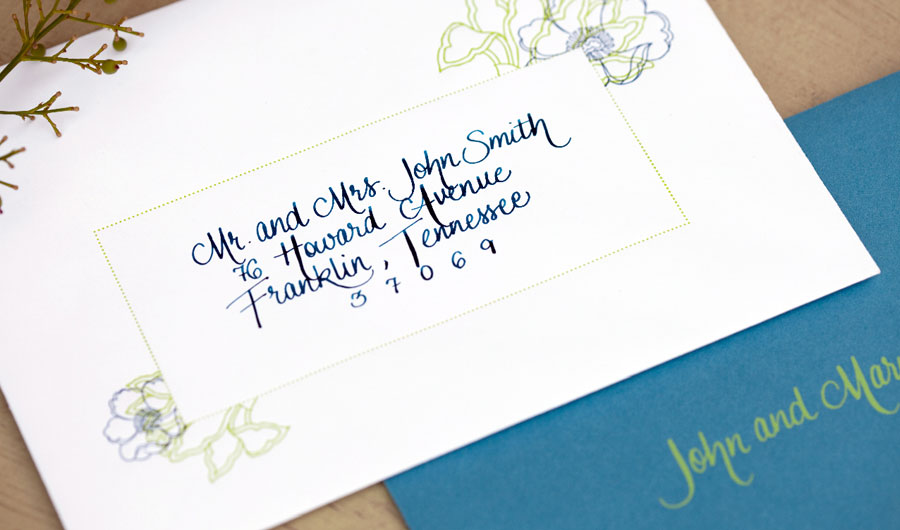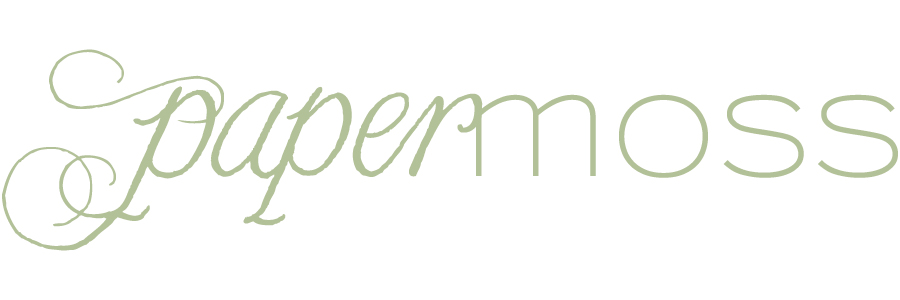If you caught our post on Friday, maybe you were ooo-ing and awe-ing at the art of hand calligraphy right there along with us. If calligraphy isn't in your budget or if it's not your style, there are certainly other options. If you choose to do your own addressing, here is everything you need to know to make it happen, according to Peggy Post from the Emily Post Institute. One Envelope or Two? Traditionally, a wedding invitation is sent in two envelopes, an outer envelope which is addressed and stamped, and an inner envelope—containing the invitation, reception card, reply card and other material such as directions—which bears the names of the people invited. Although it may seem complicated or overly formal, a second envelope is actually very practical because it clarifies exactly who’s invited: other family members, children, and whether or not an invited guest may bring a guest. It’s perfectly acceptable, however, for a couple to omit inner envelopes.

What’s Written on the Envelopes? The outer envelope is addressed with the names and address of the person(s) invited: Mr. and Mrs. John Smith. The inner envelope repeats the guests’ last names: Mr. and Mrs. Smith. It’s also fine to informally write the names of close relatives and friends: Grandmother, Aunt Sue, or Jessica and Henry on the inner envelope.
Addressing a married couple: Wedding invitations are always addressed to both members of a married couple, even though the bride and groom may know only one or think that only one will attend.
Addressing an unmarried couple living together: Invitations to an unmarried couple residing at the same place are addressed to Ms. Nancy Fellows and Mr. Scott Dunn.
Addressing a married woman doctor or two married doctors: If the woman uses her husband's name, the address is: Dr. Barbara and Mr. James Werner. If she uses her maiden name: Dr. Barbara Hanson and Mr. James Werner. If her husband is also a doctor and they use his last name, the address is either: The Doctors (or Drs.) Werner, or Drs. Barbara and Robert Werner.
Handwrite envelopes: Wedding invitations are special. Address them in handwriting—the bride’s, groom’s, friend’s, host’s, or a calligrapher’s. No computer-printed labels!
Avoid abbreviations: Street and Avenue are written out, although two-letter state abbreviations are okay (due to US Postal Service preference). A person’s middle name may or may not be used. If it is, write it in full instead of abbreviating; omit it if the name won’t fit on one line. It’s okay to abbreviate Mr.,Mrs., Ms., and Dr. when addressing envelopes.
Inviting guests for guests: Write "and Guest" on the inner envelope right after the invited guest’s name. If no inner envelope is used, the "and Guest" phase is not written on the outer one; instead a note is included in the invitation or a verbal invitation is extended by the couple: "Please bring someone with you."
Inviting children: If children are invited, their names are written on a line below their parents’ names on the inner envelope. If no inner envelope is used, children’s names are written on the outer envelope. Children aged thirteen and over usually receive their own invitations.
Using a return address: A return address is necessary for the US Postal Service. The USPS preferred place is the upper left-hand corner of the envelope, but the back flap is okay, too.
